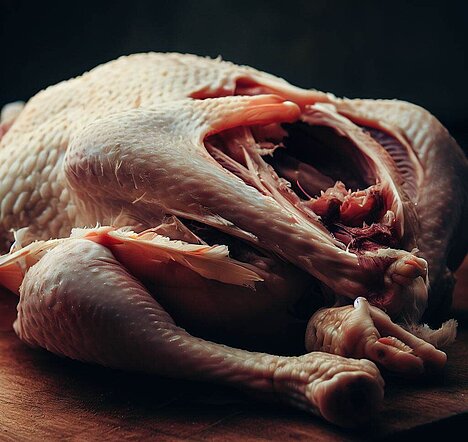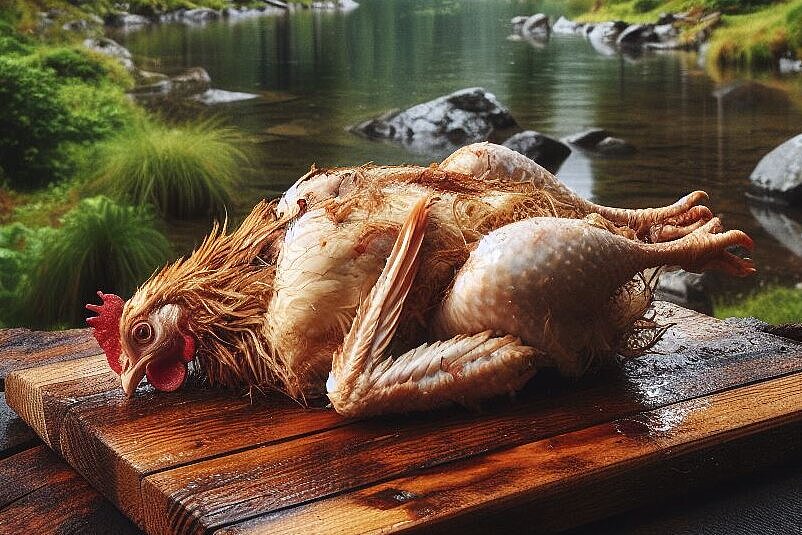Poultry carcass

You may have heard that poultry carcass can be a good ingredient in your dog's diet. But what is poultry carcass and what are its advantages and disadvantages? In this article, you'll learn everything you need to know about poultry carcass for dogs.
What is poultry carcass?
Poultry carcass is the technical term for the bones and meat of poultry such as chickens, ducks or geese. It is the leftovers that remain after the animal has been gutted and cut up. Poultry carcasses therefore contain soft and hard bones as well as muscle meat, skin and offal.
What are the benefits of poultry carcasses for dogs?
Poultry carcasses can be a valuable source of nutrition for dogs with many benefits. On the one hand, it provides a lot of protein, which is important for building muscle and keeping dogs healthy. Secondly, it contains many minerals such as calcium, phosphorus and magnesium, which ensure strong bones and teeth. Chewing bones can also strengthen the chewing muscles and promote tooth cleaning.
Poultry carcasses can also be a good addition to a barf diet, in which raw meat and vegetables are fed. Barf stands for biologically appropriate raw feeding and is intended to imitate the dog's natural diet. Poultry carcasses can make up part of the animal portion, which should make up around 70 to 80 percent of the barf ration.
What are the disadvantages of poultry carcass for dogs?
Poultry carcass is not suitable for every dog and can also have some disadvantages. Firstly, there is a risk of the dog injuring itself on the sharp bones or swallowing them. This can lead to life-threatening internal bleeding or an intestinal blockage. For this reason, you should only ever give your dog raw poultry carcasses, as cooked bones can splinter more easily. You should also keep an eye on your dog when he eats and always provide him with enough water.
Poultry carcasses can be a healthy and tasty food supplement for dogs with many benefits. However, you should be well informed about the correct feeding and the associated risks beforehand.
If you notice any signs of hypersensitivity or poisoning in your dog, you should see your vet immediately. We are not a substitute for a vet, but we try to be as accurate as possible. Every dog reacts differently and we recommend you get a second opinion or consult your vet if in doubt.
Stay healthy and take good care of your four-legged friend!😊
Similar to Poultry carcass
Duck carcass is the carcass of a duck from which the breasts and thighs have been removed. It consists of bones, cartilage, meat, skin and fat. Duck carcass is a natural source of calcium, which is...
Goose carcass is a by-product of goose farming and consists of the bones, skin, wings and neck of the goose. It has a high bone content, which gives the sauce a good taste. Goose carcass can be...
Chicken carcass is what remains of the chicken after it has been gutted and cut up. It consists of bones, cartilage, skin and meat scraps. Chicken carcass is a popular BARF product as it is a...
Turkey carcasses are the bones and meat that remain after a turkey has been gutted and carved. They usually still contain some skin, fat, cartilage and tendons. Turkey carcasses are often considered...



